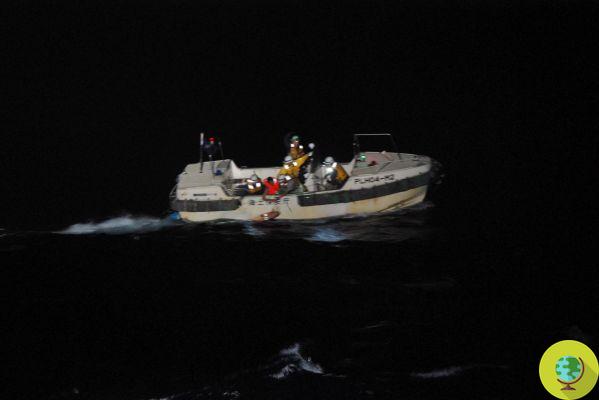
New Zealand government said to stop cattle exports after tragedy involving freighter Gulf Livestock 1
Stop exporting live animals. In the aftermath of the terrible accident which, according to initial reports, resulted in the death of 42 people and around 6000 cows aboard Gulf Livestock 1, the New Zealand government has said to stop exporting cattle.
On board the ship which departed from Napier, New Zealand on August 14 and headed for Tangshan, China, were 43 sailors and about 6000 cattle. There is currently only one survivor. The ship capsized and then sank due to Typhoon Maysak, most likely taking lives and animals with it. Its arrival at its destination was scheduled for today but unfortunately, as we know, the freighter stopped off the coast of Japan.
Unfortunately, in addition to the 42 sailors, including 38 Filipinos, two Australians and two New Zealanders, 5867 cows also lost their lives. Although New Zealand has not exported livestock for slaughter since 2016, the animals are sold overseas for breeding.
Ship with 6 cows on board capsizes and sinks in Japan due to typhoon Maysak: 42 sailors dead
But in the aftermath of the tragedy, New Zealand's Ministry of Primary Industries (MPI), which deals with exports, said it had
"temporarily examination of applications for the export of cattle suspended after the ship carrying stocks from New Zealand to China disappeared off the coast of Japan. MPI wants to understand what happened while sailing on Gulf Livestock 1. "
According to the British newspaper The Guardian, an MPI spokesperson denied that there were any pregnant cattle on board.
Since 2016, the export of livestock (sheep, cattle, deer and goats) for slaughter is prohibited by the country:
“Under the 2016 Animal Welfare (Slaughter Livestock Export) Regulation, no live animals may be exported for slaughter without the prior approval of the Director General of the Ministry of Primary Industries (MPI). Approval can only be granted if the general manager believes that the risks can be adequately managed ”.
In addition, exporters are required to provide a declaration on the purpose of exporting livestock.
Livestock ships are often owned and operated by different companies, and name changes are common. Gulf Livestock 1, formerly called Rahmeh, Cetus J, Dana Hollandia and Maersk Waterford, is currently run by a German company, MC-Schiffahrt which posted a message of condolence on its website:
“With great regret we have to announce that on September 2nd we lost contact with one of the ships under our technical management, the MV“ Gulf Livestock 1 ″, traveling from New Zealand to China and having crossed Typhoon Maysak in the Chinese sea. Contact with the ship has since been lost and a distress signal has been received. Japan's MRCC has deployed SAR teams and we hope the research will soon bring positive results. The competent authorities have been informed accordingly. Our thoughts are with our crew and their families ”.
It is not yet known whether the animals on board were destined for slaughter or for reproduction but unfortunately this will not change their fate today.
Sources of reference: MPI, Mc-schiffahrt,
READ also:
The supertanker burns with 2 million barrels of crude oil: new environmental disaster off the coast of Sri Lanka
Ship loaded with cattle with 14.000 sheep on board capsizes in the Black Sea
Tir overturns and 70 thousand chicks destined for a breeding invade the A14 motorway


























